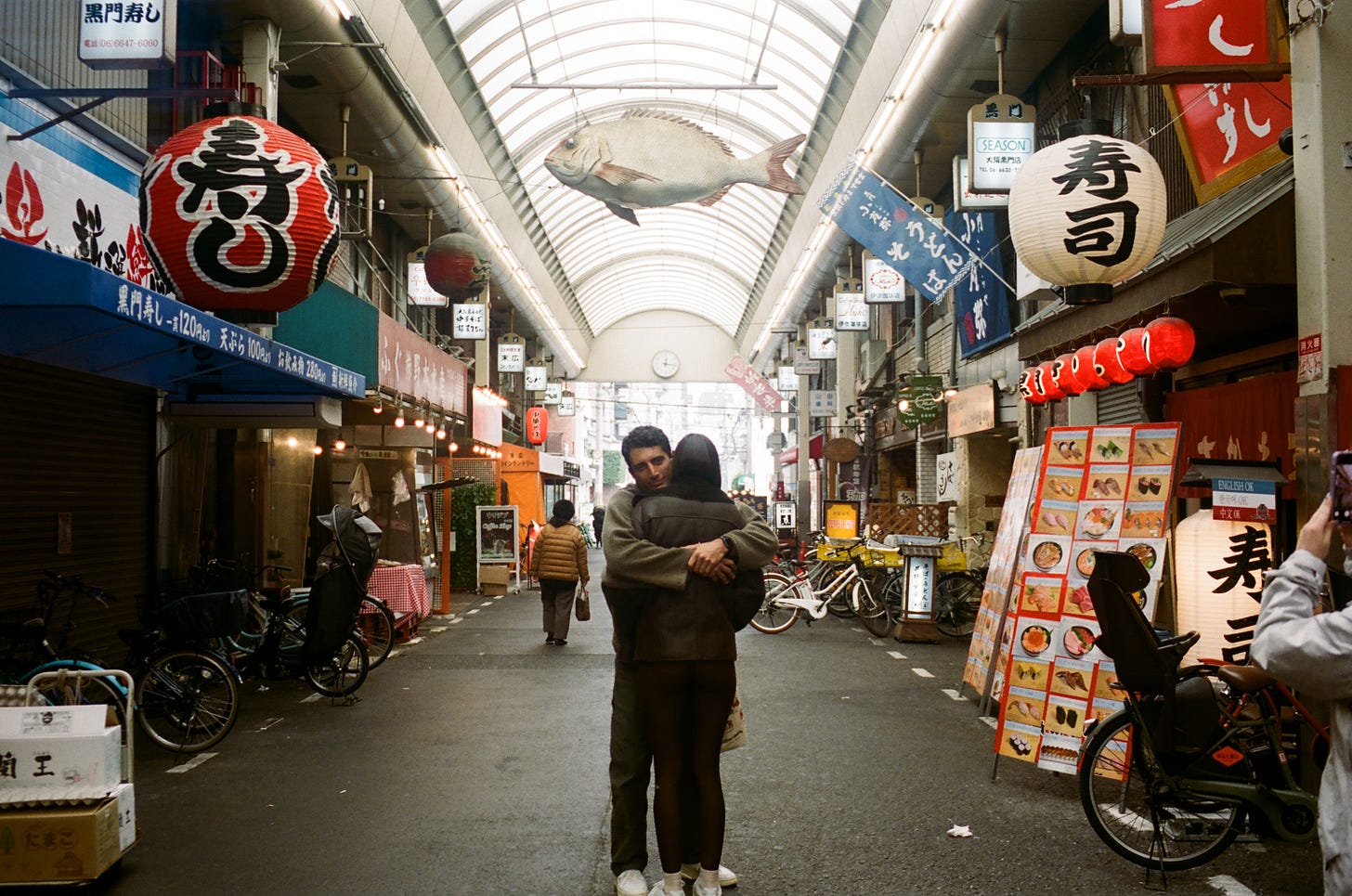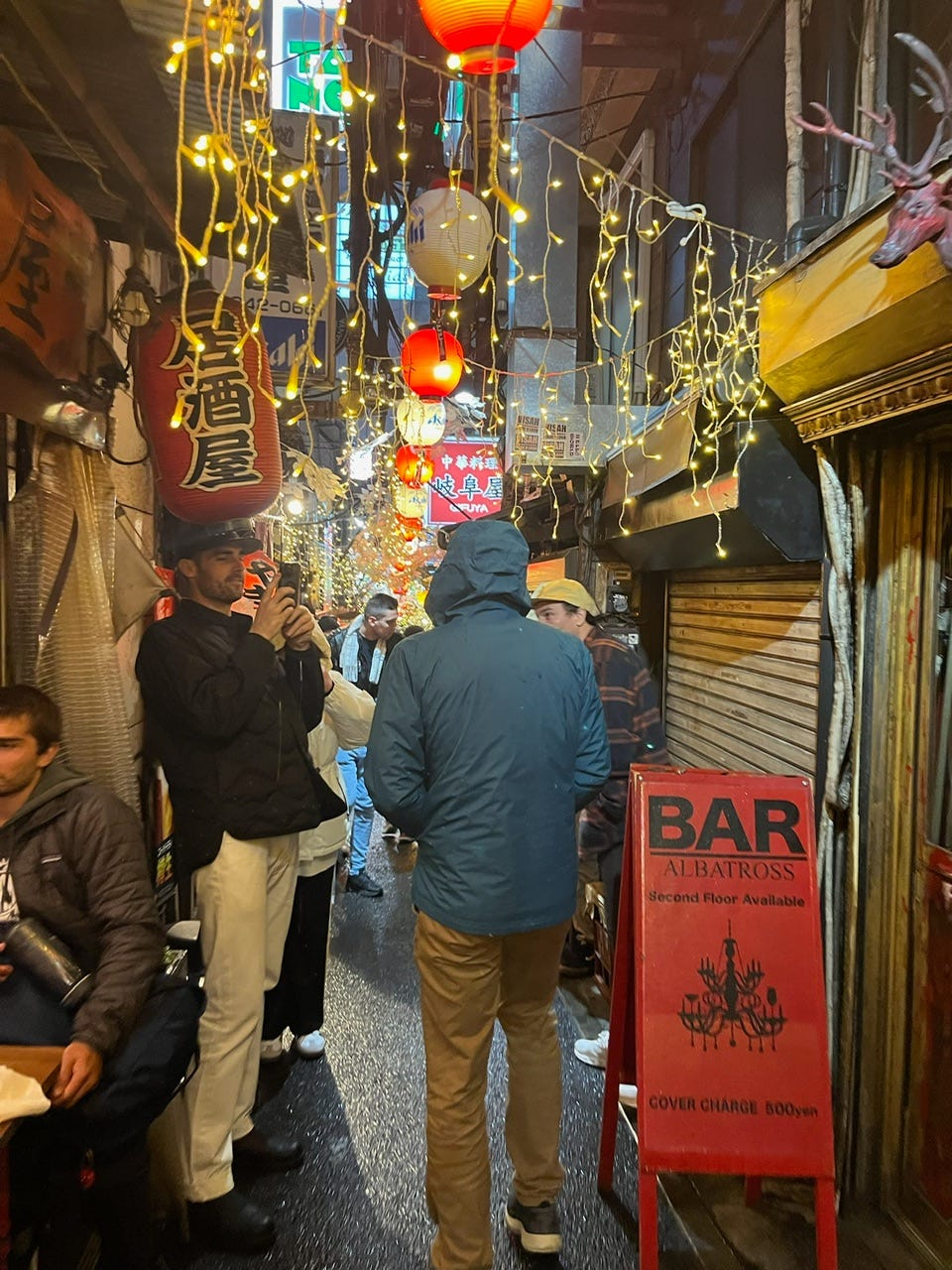In my ongoing quest to understand what makes Tokyo, and Japan more broadly, feel so uniquely livable, connected, and dynamic, I recently picked up Emergent Tokyo: Designing the Spontaneous City by Jorge Almazán. It’s hard to explain, but Tokyo has an energy and structure that make most other cities feel flat by comparison. And no, it’s not just some idealized, rose-colored Tokyo Glasses I’m wearing. There’s something tangible in the way Tokyo is designed, layered, human-scaled, constantly surprising that keeps pulling me back.
This book offers a compelling framework for why that is. Almazán highlights five distinctive architectural “zones” across Tokyo and repeatedly returns to one concept, Dynamic Edges. This concept specifically helped put into context for me, what makes Tokyo so great. These dynamic edges represent the fluid, often porous boundaries between these “zones” and public sidewalks and streets allowing for a kind of constant, lived interaction between private enterprise and public life. It’s this very permeability that helps make Tokyo feel endlessly explorable, like you’re always on the verge of discovering your own hidden corner of the city.
Another key theme Almazán touches on is Tokyo’s embrace of micro-scale leasing. We're talking about spaces as small as 10 to 15 square meters and in some cases 7 square meters (a standard US bathroom is about 3.5 square meters for context) often in prime urban locations. This system enables independent businesses to take root and thrive in places that would otherwise be swallowed up by large-scale development in most Western cities. The result is a dense patchwork of small, character-rich establishments, often shielded, by design or by legal ambiguity, from corporate homogenization.
The two zones in the book that most vividly embody these ideas are Yokocho alleyways and Zakkyo buildings. And outside of the Yamanote line loop, where most Tokyoites live, there often integrated with high density low rise residential neighborhoods, which gives residents easy access to these lively business districts. In this blog post I’m more focused on the foreigner experience in Tokyo so I’m going to keep my attention on central Tokyo. I’d also argue there’s a third, broader pattern not explicitly addressed in the book: the way these spaces collectively form Tokyo’s unique fabric of discovery-driven urbanism.
Yokocho Alleyways
The most famous example is Golden Gai, a 3,000 square meter (About the size of half a soccer field), nightlife district tucked away in Shinjuku. But Yokocho clusters, tight post-war alleyways that originally housed black-market stalls, can be found across Greater Tokyo often near train stations. Over time, they evolved into their current iteration of nightlife and entertainment districts. What makes them so special is the sense of serendipity they spark. You can be walking along a wide, modern street, duck into an alleyway, and suddenly find yourself surrounded by hundreds of tiny, independently run bars and eateries. Each is unique, with room for maybe five to ten patrons, and each reflects the personality of its owner. The small unit sizes keep overhead low and discourage cookie-cutter business models. And because ownership is often fragmented and murky, it's difficult for developers or big chains to swoop in and flatten the area for high-rise redevelopment.
Zakkyo Buildings
If Yokocho are horizontal explorations, Zakkyo buildings are their vertical counterparts. These skinny, high-density towers, usually seven to ten stories tall, are filled floor-to-ceiling with tiny businesses: bars, salons, cafes, karaoke rooms, Manga cafes. They often cluster together forming Zakkyo Districts forming high-density commercial districts perfect for exploration. The stairwells are tight, the elevators sometimes open right onto the sidewalk, and the floor plans often cram three or four tenants into each level. The most famous cluster of Zakkyo buildings sits in Shinjuku, not far from Golden Gai, but they’re scattered throughout Tokyo and other Japanese cities. What makes them magical is that same sense of hidden potential. You step inside with no idea what you’ll find, an obscure vinyl bar on the sixth floor, a ten-seat izakaya on the eighth, a pasta cooking-magician-bartender on the third. Just like Yokocho, these buildings allow small-scale entrepreneurs to flourish with low overhead and build hyper-specialized, personality-driven businesses in prime locations. It’s important to note that both of these “zones”, Zakkyo and Yokocho, are often located in high-value locations making accessibility easy. And crucially, they open directly to the street. This seamless foot traffic flow, no need to drive, no need to stare at a map with a big YOU ARE HERE arrow inside a windowless shopping mall, is what gives Tokyo its effortless charm. You’re not locked inside some climate-controlled box, your part of the city, bobbing and weaving.
This stands in stark contrast to much of the U.S., where retail and dining are often sequestered inside shopping centers or big-box complexes, windowless, car-dependent, and disconnected from the broader urban fabric. In Tokyo, you float between spaces. You pop into a boutique on the ground floor, grab a drink on the seventh, then wander into a Yokocho bar across the street. It’s frictionless. And because the scale is human, the experience is never exhausting or overwhelming. The density also creates a kind of productive tension: independent businesses are forced to compete side-by-side, but they also form symbiotic clusters. These zones of mutual benefit, particularly in nightlife districts, encourage innovation but at the same time foster a sense of community.
These Zakkyo and Yokocho districts are scattered across the city from commuter suburbs to central Tokyo locations like Shinjuku and Shibuya. But it’s crucial to remember that they’ve been able to thrive in premier real estate markets in Tokyo. Shinjuku and Shibuya are akin to high end NYC locations like Soho and tourist hot spots like Times square. You would be hard pressed to find anything resembling this level of dynamic independent ownership in either of those places let alone almost any part of NYC where corporate-led urbanism is the main driving force.
But we do win on outdoor dining! Tokyo might be the least friendly outdoor dining city in the world. But hey no one can be perfect.
Serious about buying a home in Japan—especially in Hokkaido?
Subscribe to our exclusive paid blog and get insider access to Japan’s most promising real estate opportunities. Each month, we send you 10 top property picks, complete with:
ROI potential breakdowns
Estimated renovation costs
Proximity to ski resorts, amenities, and transport
Personalized Q&A access, ask us anything about the listings or the Japan market






